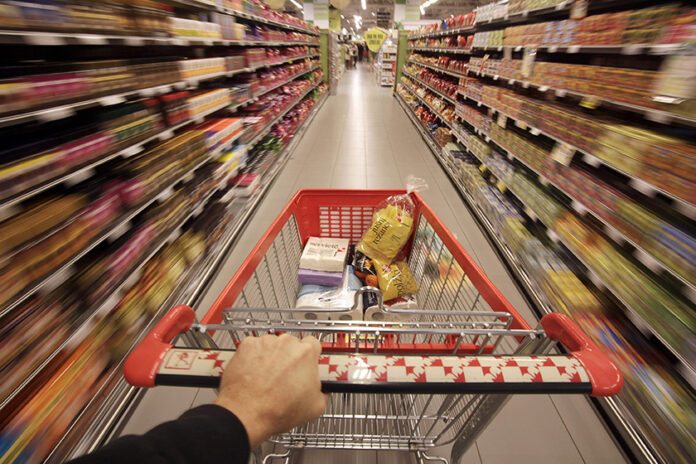Think back to the beginning of the year 2020. A simpler time, pre-Covid-19, pre economy crumbling, when the biggest concern Pakistan had on its plate was our spiraling inflation. No, really: inflation in January 2020 stood at a whopping 14.6%. It was the highest recorded monthly inflation rate in nine years.
Thankfully, inflation figures improved in the period since then. As our graph shows as well, inflation fell to 12.4% by February, 10.2% by March, and then to single digits realm by April 2020, at 8.5%. The inflation rate was then to stay in this realm for the next eight months, occasionally hitting 9%.
Then in January this year, inflation accelerated to just 5.7%. Could it be? Was inflation finally under control? Commentators certainly thought so: the finance ministry was quick to say that the sliding trend would continue, and that there would be no increase in the interest rate.
Not quite – the inflation rate, announced by the Pakistan Bureau of Statistics at the beginning of March, jumped to 8.7%, a four month high.
It was a number that Hamza Kamal, senior investment analyst at AKD Research, had already predicted, in a notice sent to clients on February 25. In the report, Kamal said that inflation is likely to stand at 8.7% in February 2021, predominantly due to resurging food prices, and a revision in electricity tariffs.
“After being recorded at 5.7% in January 2021, mainly on account of high base effect and muted food inflation, inflationary reading is likely to return to +8% reading, with February 2021 inflation likely to clock in at 8.7% year-on-year,” says Kamal.
According to Kamal, monthly food inflation was likely to turn positive after recording two consecutive monthly declines, with a growth of 0.96% month-on-month. Consider that chicken prices increased 30.8% month-on-month, after declining 18.3% month-on-month in January 2021.
There has also been an increase in fuel prices, which rose 5.4% month-on-month on account of the boom in oil. The government also revised electricity tariffs, increasing the base tariff by Rs1.95 per unit across all consumer categories including life-line consumers. There was also a fuel price adjustment of Rs1.54 per unit in December 2020, which pushed up the overall housing index by 4.44% month-on-month.
According to Kamal, urban inflation was likely to clock in at 8.24% year-on-year in the current month compared to 5.03% year-on-year in January 2021, whereas rural inflation was likely to be recorded at 9.37% year-on-year in February 2021 compared to 6.60% year-on-year in January 2021. For the first eight months of fiscal year 2021, inflation was expected to stand at 8.25%, compared to 11.7% during the same period last year.
So, what does Kamal predict for the future? According to his research, inflationary pressure could mount in the medium run. After all inflationary pressure is expected to build up following surging commodity prices(in fact, the commodity price index TRG has surged by 36.7% since the start of this year). The federal government is also likely to allow pending and future tariff adjustments. Plus, the month of Ramadan is approaching, which will likely affect inflation. Indeed, the inflationary reading for the remaining fiscal year 2021 is likely to average at 10.2%.
According to Kamal’s estimates, every 5% increase in oil price raises our monthly inflation estimate by 19 basis points, whereas every 10% increase in utility tariffs translates into an increase of 47 basis points on on monthly inflation.
“In the medium run, IMF directives to increase tax revenues in fiscal year 2022 to Rs5.9trillion, compared to the Rs4.7 trillion for the current year should result in inflationary pressure jacking up,” says Kamal.
Apparently, the federal government is already considering withdrawing sales tax exemptions worth Rs360 billion which would push up consumer end prices.
From monetary policy vantage, the State Bank of Pakistan is still likely to keep interest rates on hold in at least next two monetary policy meetings based on stable external account outlook. According to Kamal, the resumption of the IMF program has been perceived as a net positive by the market. There will be pressure to keep the external account in a comfortable position despite potential pressure from pickup in imports in line with economic activity, and rising commodity prices. This will prompt the State Bank to maintain interest rates at current level, though perhaps there will be some tightening in the later half of 2021.
“Moreover, potential positive developments on FATF (also acknowledged by IMF, plenary session scheduled from Feb 22-24) should accentuate the bull run in the market,” says Kamal. He looked favourably upon the cement, steel, power, and oil and marketing industries, particularly Pakistan State Oil.

























